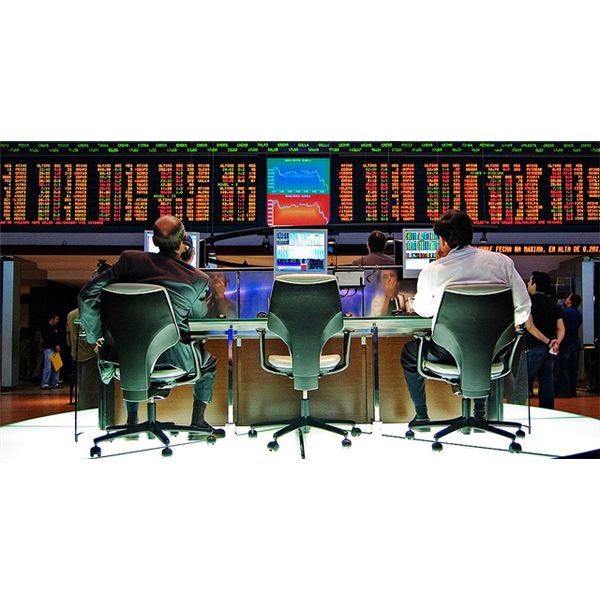The Pros and Cons of ExchangeTraded Funds (ETFs) Automatic Finances
Post on: 16 Август, 2015 No Comment

Exchange-Traded Funds (ETFs) are, as their name implies, funds that trade on an exchange. Traditionally, ETFs have been baskets of stocks that track broad indices.
More recently, ETFs have launched that track exotic strategies or asset classes with the goal of allowing retail investors to participate in institutional strategies.
Why ETFs?
The ETF structure is considered by many to be favorable compared to Mutual Funds for the following reasons:
- Lower management fees. While an ETF is not guaranteed to have a lower expense ratio, they typically do when compared to mutual fund counterparts. Additionally, ETFs generally do not charge 12b-1 fees .
- Tax Efficiency. While ETFs can trigger capital gains, they very rarely do. As ETF shares are created and redeemed by Authorized Participants. ETF issuers can swap out unfavorable cost basis of underlying securities, keeping the fund tax-efficient. Conversely, Mutual Funds can trigger capital gains for shareholders based on the redemption activity of other sharesholders.
- Intra-Day Pricing. ETFs can be bought or sold throughout the day. Mutual Funds are priced only at the end of each trading day.
- Transparency. ETF holdings are published in real time and indicative value calculations are available every 15 seconds.
It should be noted, however, that Mutual Funds have advantages over ETFs as well. For example, transacting ETFs generally requires brokerage fees while Mutual Funds do not. Additionally, ETFs have a bid/ask spread using market orders alone could be costly.
To avoid paying unnecessary spreads, investors should check with the ETF issuer to access indicative value calculations (often available on Bloomberg with the .iv suffix), and use limit orders at, or slightly above, the indicative value.
Growth of ETFs
For the reasons listed above, ETF assets have increased dramatically in recent years as Mutual Fund assets have declined.
Consider the following:
- In the US, net sales of mutual funds (excluding ETFs) were minus US$4.9 Bn, while net sales of ETFs domiciled in the US were positive US$7.6 Bn in the first four months of 2009, according to Strategic Insight .
- At the end of Q2 2009, the US ETF industry had 697 ETFs and assets of $537.87 billion from 21 providers on 3 exchanges.
- YTD assets have risen by 8.2%, which is more than the 2.4% rise in the MSCI US index in USD terms.
- iShares is the largest ETF provider in terms of both number of products, with 179 ETFs and assets of US$286.44 Bn, reflecting 53.3% market share; State Street Global Advisors is second with 85 products and US$110.74 Bn, a 20.6% market share; followed by Vanguard with 39 products, assets of US$59.51 Bn and 11.1% market share at the end of Q2 2009.
- Combined, there were 833 products with assets of US$607.47 Bn from 34 providers on 3 exchanges in the US.
Types of ETFs
ETFs are often thought of as broad index products. While ETFs can provide broad equity exposure, they can also be utilized for alternative allocations.
The following strategies can now be access through the ETF vehicle:
- Leverage and Inverse Indices. Try ProShares to double your bet, or use half of your equity for the same exposure, freeing up additional capital for other investments. Note that these funds rebalance daily long term performance may differ from 2/-1 times your investment due to daily compounding.
- Currencies. The CurrencyShares lineup allows to to invest in the worlds largest market, at only 40 basis points.
- Private Equity. PowerShares offers an ETF that tracks listed Private Equity companies in the US. Private Equity typically requires a substantial investment and a lack of liquidity and diversification. The PowerShares Listed Private Equity portfolio (PSP) alleviates both of those concerns.
- Carbon-Emissions Allowances. The European Union greenhouse gas cap-and-trade system, European Union Emissions Trading Scheme. has effectively reduced the EU carbon footprint by commoditizing the right to pollute. AirShares (ASO) allows investors to access to this market.
- Volatility. iPath ETNs are a cousin of ETFs that act the same, except that shares do not represent direct ownership of the underlying securities. Rather, shareholders own debt of the issuing company. In other words, the issuing company is offering a bet on the underlying index, so the health of the issuing company has to be considered. While that is a distinct disadvantage of this structure, it allows issuers to offer more exotic strategies. Accordingly, iPath now offers a pure-play volatility ETN (VXX). Best used as a hedge against volatility, VXX can effectively provide short term equity volatility exposure.














